
Maintaining and growing a retail business is an enormous undertaking. As you know, despite the perceived simplicity of the business model, a lot more goes into the process of running a retail store than some might expect. As businesses scale, it’s imperative to take stock of where you’re at and if the tools and foundational elements in place are offering the best solutions and support for longevity.
This guide is a great checklist for retail businesses to assess their current processes and practices—and align their strategy across locations to a singular vision. With the basics in focus, reevaluating your day-to-day and adhering to best practices based on your company’s vision, the business will set its course away from the pack.
How to set up a retail business for success
Running a successful retail business in 2023 requires that you:
- Know your why
- Champion your culture
- Streamline your service
- Hire a strong team
- Manage your back office
- Investing in a point of sale
- Organize your accounting and bookkeeping
- Oversee your employees
- Have a payroll system in place
- Track your inventory
- Build an eCommerce presence
- Set up a digital marketing strategy
- Put customers first
Build a digital presence and diversify your revenue
An ecommerce website for your business has evolved from a “nice to have” to a must-have. Get started with picking out the best domain name for your store, the best shipping options and more with our free guide.
Know your why
Most entrepreneurs and business owners start out with a ‘why?’ But as their locations grow, sometimes the ‘why’ they started with gets lost in the mix of the day to day. So much of the success of business owners and leaders is in keeping your initial purpose as your true North Star. Why you exist is the foundation for the mission and vision—it isn’t what you sell or how you sell it but it typically informs both.
For some, it is a gap they see that no one else does in the marketplace or perhaps the emergence of a new customer that isn’t yet being served. Drill down to the basics of what originally inspired your business to get clarity of purpose.
Author Simon Oliver Sinek explores how purpose inspires action in his book Start with the Why and incredibly popular TEDXTalk. In his talk, he describes how working from the inside out can not only help filter out choices, from hiring to product sourcing, but it creates a blueprint for company culture.
Fine tune your culture
Company culture is something that can be easily taken for granted. It is so omnipresent that it somehow becomes invisible to the eye. Your values, attitudes and standards create the foundation for who is attracted to work at your company and those that frequent as clientele. It is never a bad idea to do an audit of what is happening on the frontlines of your business, including the points of service, and assess if it accurately reflects the original mission statement.
Nike is known for their culture. The brand is synonymous with creativity and innovation—and these values extend beyond their outward-facing campaigns and product line down through to each of their employees.
Nike has numerous programs in place to ensure continuous improvement through nurturing their talent from training to coaching and mentoring. Championing inclusivity as central to this innovation, they created two programs Bias to Breakthrough that works to minimize any barriers to creativity within their structure and NCourage—a series of employee led networks to encourage community building.
More and more, top talent seek organizations and workplaces that reflect their own values. It is an investment of time to address issues or create programs that support your business’ vision. However, it can not be understated how significant an investment in culture is for hiring and staff retention. Additionally, culture becomes your greatest asset in free advertising via good word of mouth from satisfied customers who feel what your business is about.
Janet Wright, the owner of FloorPlay Socks, who transformed her passion project into a full-fledged multilocation business knows the importance of nurturing culture. She’s built a whole world from the ground up, with socks that excite her community. She maintains an edge over her competition by staying close to her staff and customers. As she describes it, “It’s a lot of work, but it’s something that I really enjoy doing. I personally think we have the best customers on the planet, so it’s nice to be out there meeting people, seeing people every day. People walk into my store and the nicest thing they can say to me is, Oh my God, this place is so much fun.”
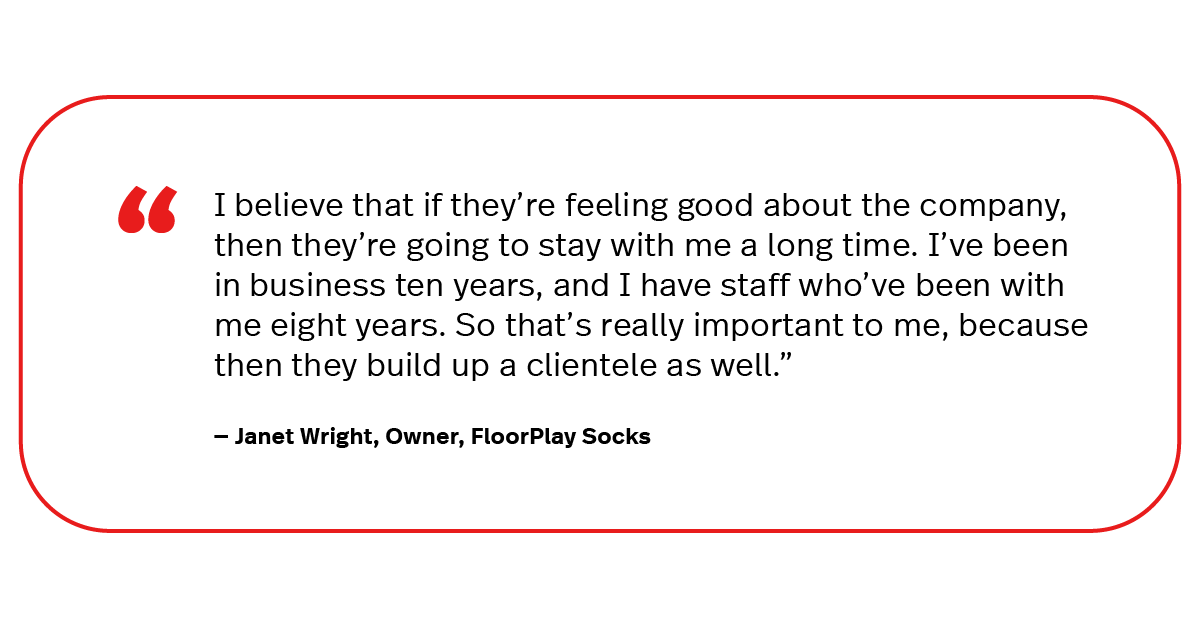
Streamline your service
One of the best ways to ensure your continued success is to put yourself in your customers shoes. Walk yourself through the entire process from entering the business to interacting with staff and making a purchase and see where friction arises. Can a customer easily inquire about something that isn’t on shelves and have a staff member look it up? Is the point of sale system speedy and smooth and are there minimal errors?
An investment in hardware that automates tasks for ease of service creates a superior experience for customers. For example, having the option to have their receipt paperless and emailed directly to them or a customer profile at the salesperson’s fingertips to offer suggestions based on previous purchases. The right equipment can mean the difference between losing a sale or doubling a sale when it comes to a customer’s time. Knowing what is in stock, having product details and expediting a purchase are now must-haves versus nice to haves for today’s shoppers.
Running a retail store is non-stop, making the adoption of new technology fundamental. From staying ahead of the curve in service to alleviating the heavy lifting of tedious tasks so staff can focus on customers, researching and pursuing the top tools for retail is a non-negotiable.
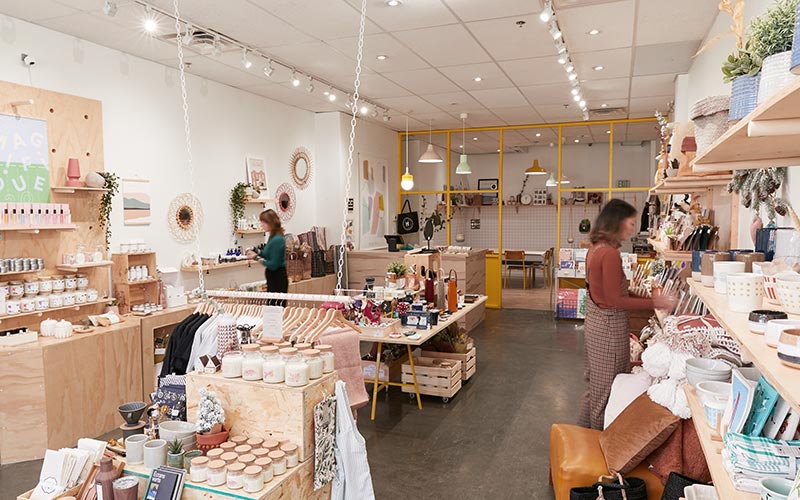
Hire a strong team
The team at your side makes or breaks your operations. A good team can assist customers, provide excellent customer service, increase the likelihood of a sale happening and build customer loyalty. A bad team can turn customers away by contributing to a poor customer experience, cause revenue losses and destroy your reputation. It’s a lot easier to hire and train the right retail employees from the start rather than doing damage control six months from now.
When posting job ads, be explicit about duties and responsibilities, physical requirements, personality traits and any relevant experience or qualifications. Make sure you post job openings in places your prospective employees are likely to see, like social media ads for young adult employees and LinkedIn posts for experienced professionals.
Hiring is a marathon, not a sprint. Never hire someone with obvious red flags just because they are available or eager. Instead, keep interviewing until you find the right fit. Consider having your mission statement and the core values at hand for you or your hiring manager to keep them top of mind, in pursuing individuals that reflect these same attributes.
Manage your back office
The front of the house and on your floor isn’t your only priority in running a successful retail business. Back office operations, like accounting, HR and inventory management are equally important. Proper treatment of your back office can have a lasting effect on the financial health and sustainability of your business.
Invest in a point of sale system
Few things matter as much as your retail point of sale system.
A retail POS system can take care of many of the front of house and back office tasks we mentioned above, like ringing up orders, tracking revenue, managing inventory and keeping an eye on all data related to your operations. Just make sure you also get the POS hardware that you’ll need to accept payments, like a card reader, barcode scanner and cash drawer.
Deanna Serra is the owner of Art for the People, a boutique and gallery based in Austin. Her business has a unique challenge of representing over 100 artists and managing orders, inventory and commission. Serra’s solution was choosing Lightspeed as their provider—allowing them to seamlessly integrate with the apps they currently use and create an efficient workflow to identify, discuss and track every piece they’re selling. The right POS system allows Serra to address the complexities of her business, simplifying tedious tasks and allowing her staff to focus on customers.
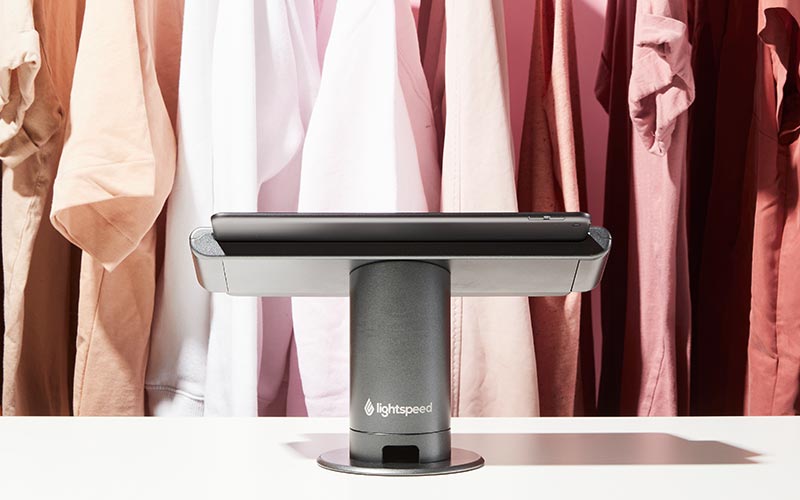
Organize your accounting and bookkeeping
No retailer can survive without a proper approach to small business accounting. Without a solid way to balance income and expenses, it’s impossible to know whether you’re earning a profit or losing money on a monthly basis.
There are plenty of platforms out there to stay on top of your books. To simplify the process, choose accounting software that integrates with your POS for hassle-free bookkeeping.
Manage and oversee your employees
Proper employee management is another key piece to set up a successful retail business. In order to help ensure your customers have a positive experience while shopping at your store, you need to make sure your business is properly staffed and that your staff are performing as expected. Nothing is more frustrating for customers than walking into a business to find limited or disinterested staff.
Here’s how to ensure that your team has the teams and knowledge they need to succeed.
Have the right tools
Use a POS system to find your peak hours and monitor employee performance metrics. When are customers coming in the most? What days of the week do you have the most transactions and sales revenue? What time period do you experience a spike in sales? Lightspeed X-Series allows you to filter your reports to distill granular sales information by year, quarter, week, day, month, or hour.
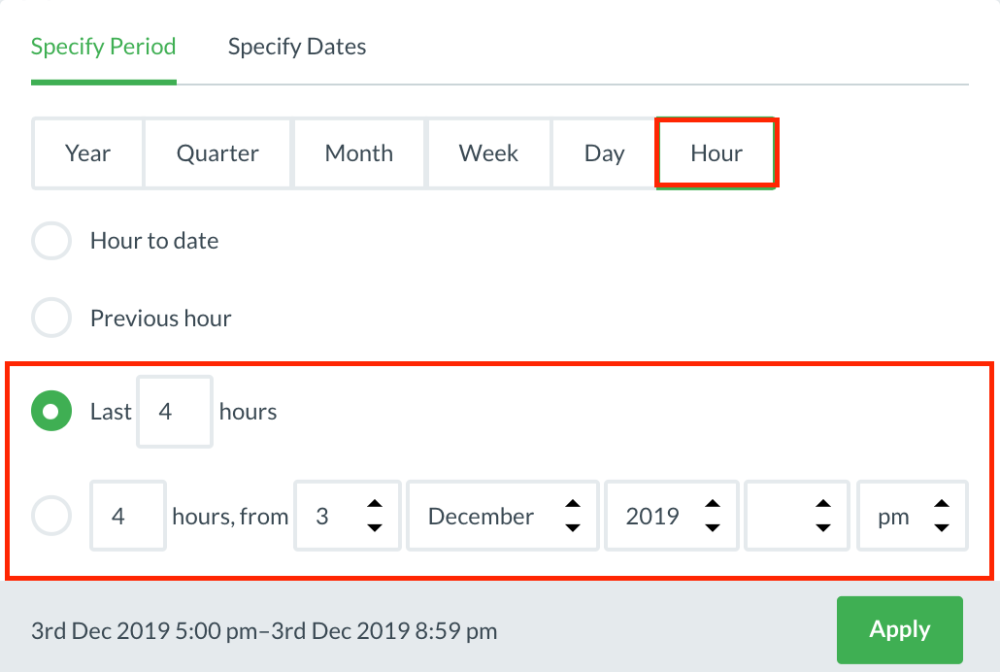
The answer to these questions will allow you to identify peak hours so that you can make sure to schedule the right amount of staff to serve your customers in a timely fashion. They’ll also help you identify top performers and under-performers so you can take the right actions.
Invest in onboarding
Once you have the right talent, you’ll want to make sure their transition into the role runs smoothly. A major part of this is training staff to get them up to speed on everything from sales tips to how to keep in-store displays on-brand.
If you use tools and technology, remember to train new employees properly on how to use them. Perhaps the most important piece of tech you’ll want them to master is your POS system.
To keep the onboarding process consistent and thorough, it could help to document exactly what that process is. This includes specific training sessions, milestones, performance goals and deadlines for new hires to meet.
This keeps not only you and your employees on the same page, but it also means that every staff member goes through the same training and has the same experience and expectations.
Play an active role in managing your shop and team
Just because you’ve onboarded your staff, it doesn’t mean you can leave them to their own devices. As a manager, it’s your job to continue to engage with them throughout their journey. Remember those performance goals we told you to set? Set up regular 1:1 meetings with your staff to check in on progress, and to set new goals when previous ones have been met.
And as much as it’s your job to lead and to mentor, it’s almost more important to remember to listen to your staff. Hear their challenges and address them, listen to their ideas and encourage them. Recognize staff strengths and delegate roles and responsibilities that cater to that.
Have a payroll system in place
All of your employees deserve a paycheck. Consider software that helps with managing payroll. It should integrate with your POS system, creating an efficient process that can generate checks, initiate direct deposit and calculate the correct taxes to withhold.
Track your inventory
Inventory management is a critical part of a successful retail operation. Without monitoring what’s selling, what’s not, average turnover and profit margin, it’s hard to know how well your store is performing or to accurately make any necessary adjustments. While inventory tracking can certainly be managed by hand, inventory management software can offer a real-time look at what you have on hand, streamlining your internal processes and practices.
Speaking of which, here are some best practices to implement when managing your inventory.
Conduct physical inventory counts
Maintain a regular cycle counting practice. A cycle count, or physical count, is when you count a portion of your inventory to estimate your overall stock on hand.
Philip Pravda of SuitCafe.com would do a physical count every day when he was managing his store. “I would choose small sections of the store … [and] count them up with the style numbers and sizes, then walk over to my computer and compare. Doing the whole store for a small business is difficult because you’re always helping customers and certainly don’t want to close … to do inventory.”
Mitigate theft
Research by Tyco Retail Solutions found that external theft/shoplifting contributed the most, at more than 35% of lost sales to shrink—closely followed by internal theft at nearly 25%. As such, keep your inventory in check by implementing theft-prevention practices such as:
- Investing in retail security tools like cameras, signage, mirrors, etc.
- Training your team to spot and handle shoplifters
- Keeping your merchandise organized
Get your staff involved
Just because you’re the store owner or manager doesn’t mean you have to do it all. Work with your team and openly communicate why it’s so important to stay on top of stock control, and provide education and training on how they can help.
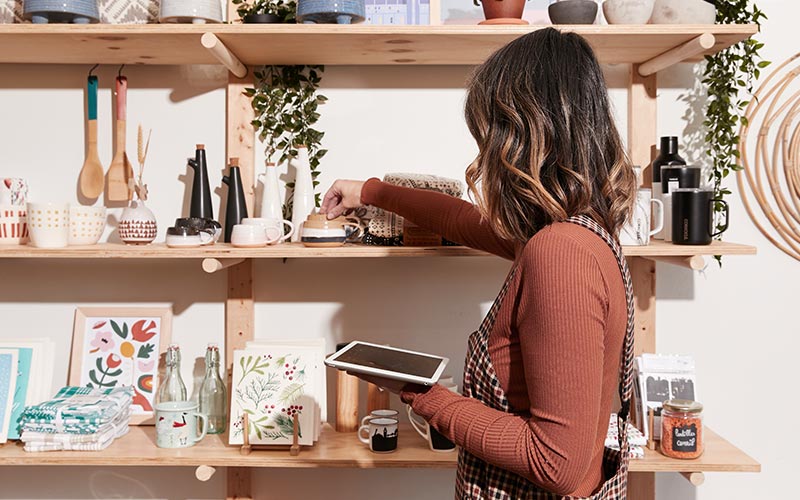
Build an ecommerce presence
These days, it’s easier than ever for retailers to sell their goods online. Not only is it easier, but it’s practically necessary. 67% of consumers have used buy online pickup in-store options and ecommerce transactions are expected to make up about 20% of all sales by 2024.
By adopting omnichannel retail software, such as a POS that integrates with your eCom store, you’ll be able to have your product information sync across both channels in real-time.
Additionally, an ecommerce store paired with your brick-and-mortar presence allows customers to find you in the digital world and the physical one. It helps create an omnichannel experience for customers that can improve revenues and enhance reach.
Set up a marketing strategy
Opening a store is a good first step, but there’s no guarantee that ‘if you build it, they will come.’ Digital marketing is a fast and affordable option that allows you to reach many potential customers. With an Instagram account, Facebook, Twitter and Pinterest, you can generate a buzz about your business before your grand opening event. These are also great platforms to engage with your customers and keep them informed of any special promotions or general communication that could impact them.
Put customers first
Remember to put yourself in the shoes of your customers. If you were a customer in your store, how would you want to be treated? Would you want to be greeted when you walked through the door? If there was a problem with a recent purchase, how would you want the company to resolve it or provide compensation for the inconvenience? Good customer service can go a long way; after having a pleasant experience, 77% of customers are willing to recommend you to a friend.
Learn More: 26 Inexpensive Customer Appreciation Ideas
Adapt and stay flexible
When things are working, or working well enough, it’s easy to stay the course and avoid taking chances. Rather than sticking with the status quo, keep a close eye on your business, monitor analytics and consistently evaluate opportunities and what they mean for the short and long-term success of your business. With strategic planning, a willingness to adapt and time-saving tools by your side, you’ll be well-equipped for the future.
Looking for adaptable omnichannel software to prepare your business for the present and future? Watch a demo to learn more about how Lightspeed can help.

News you care about. Tips you can use.
Everything your business needs to grow, delivered straight to your inbox.



![11 Tips To Make Your Pop-Up Shop a Roaring Success [For Retail Store Beginners and Pros Alike]](https://blog-assets.lightspeedhq.com/img/2021/06/2da3ae10-blog-hero_pop-up-shop.jpg)